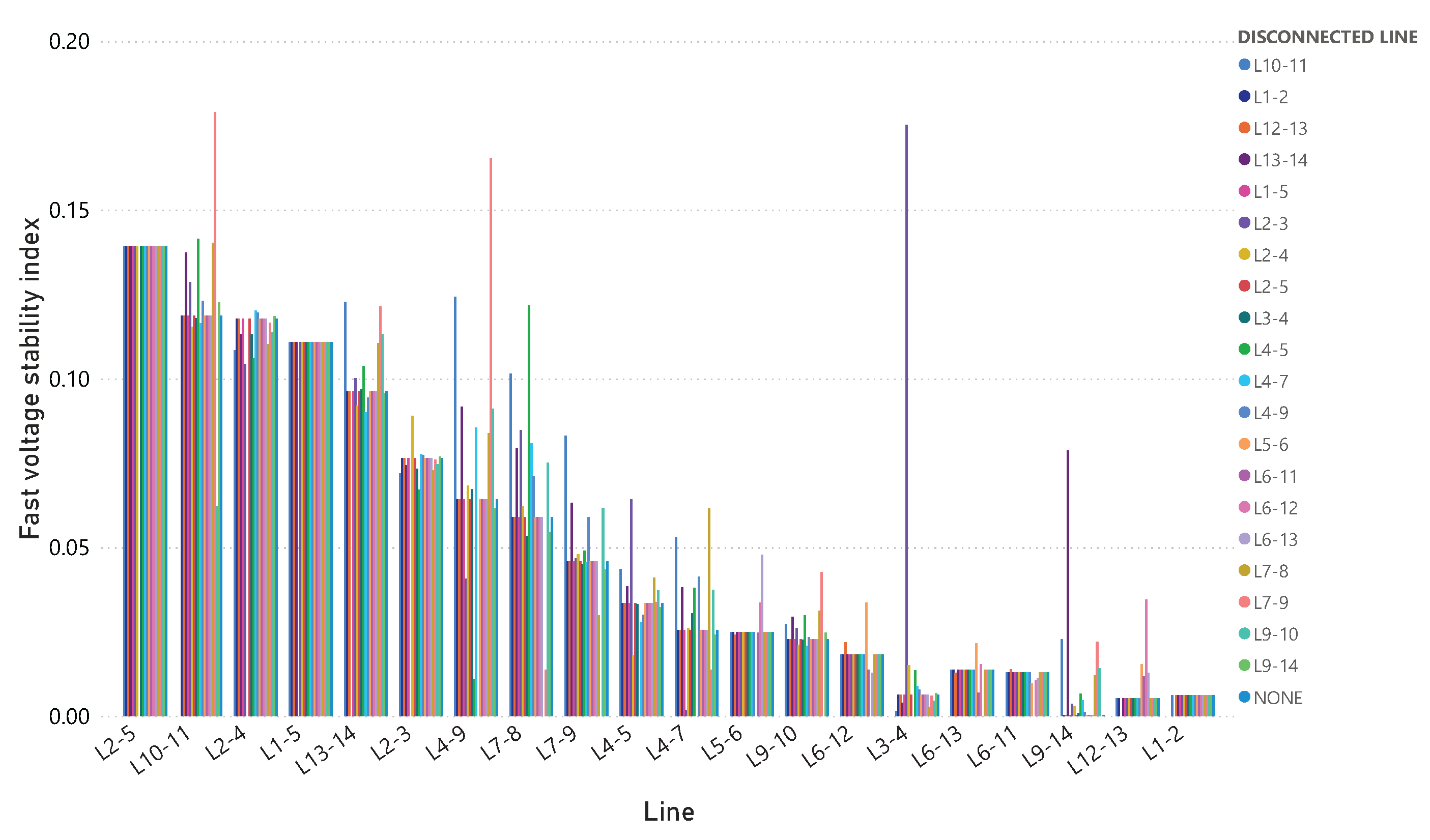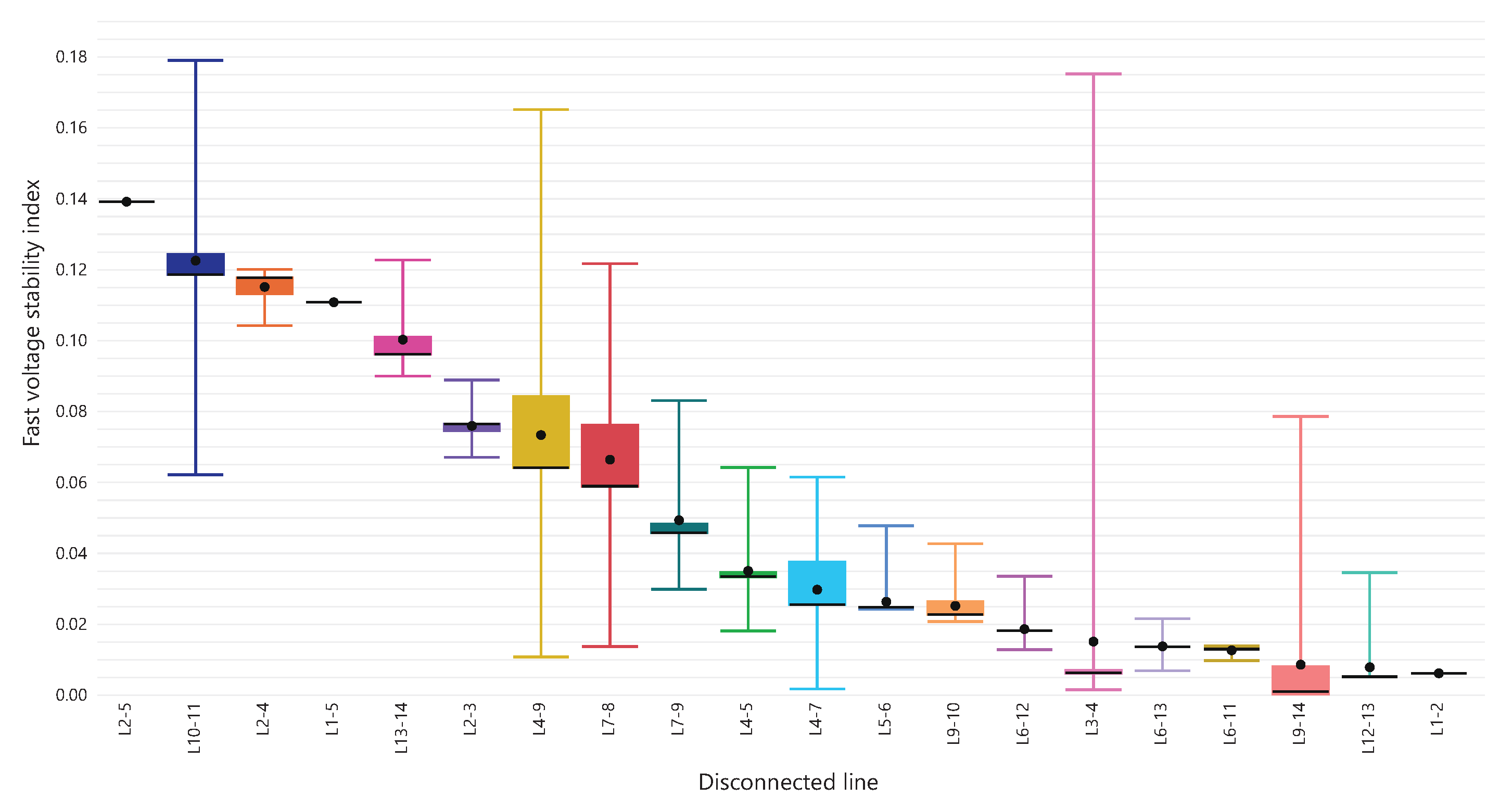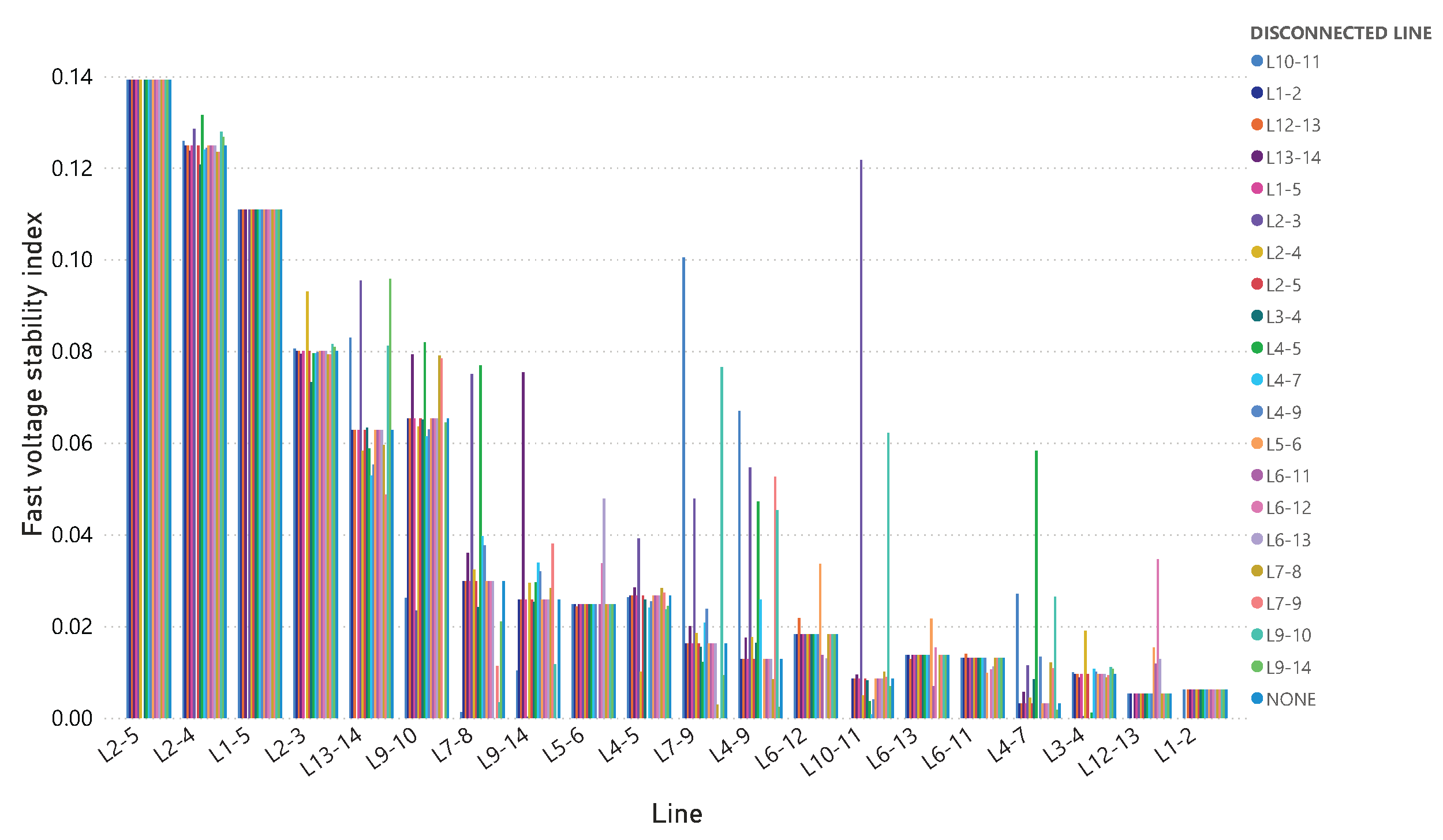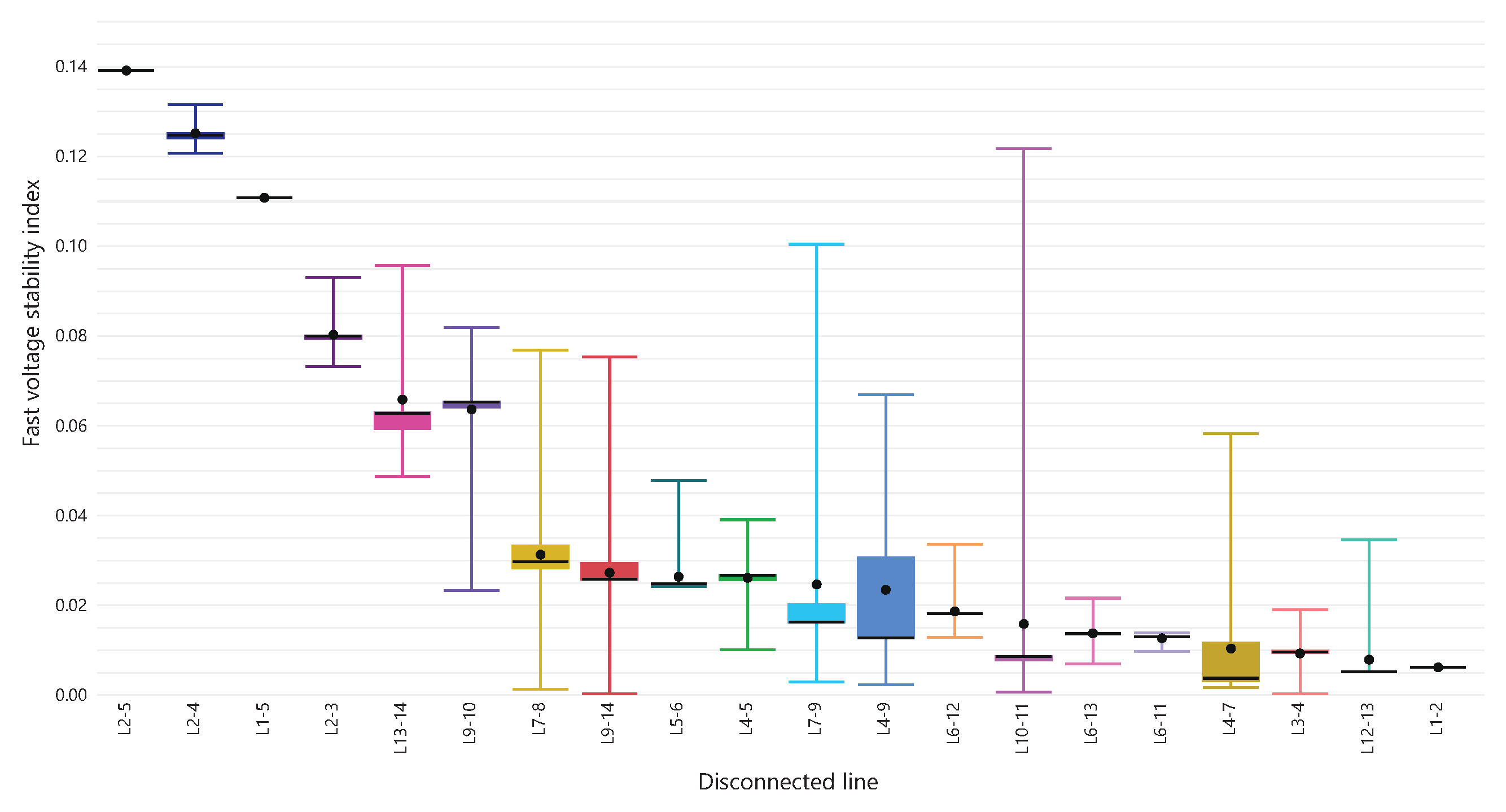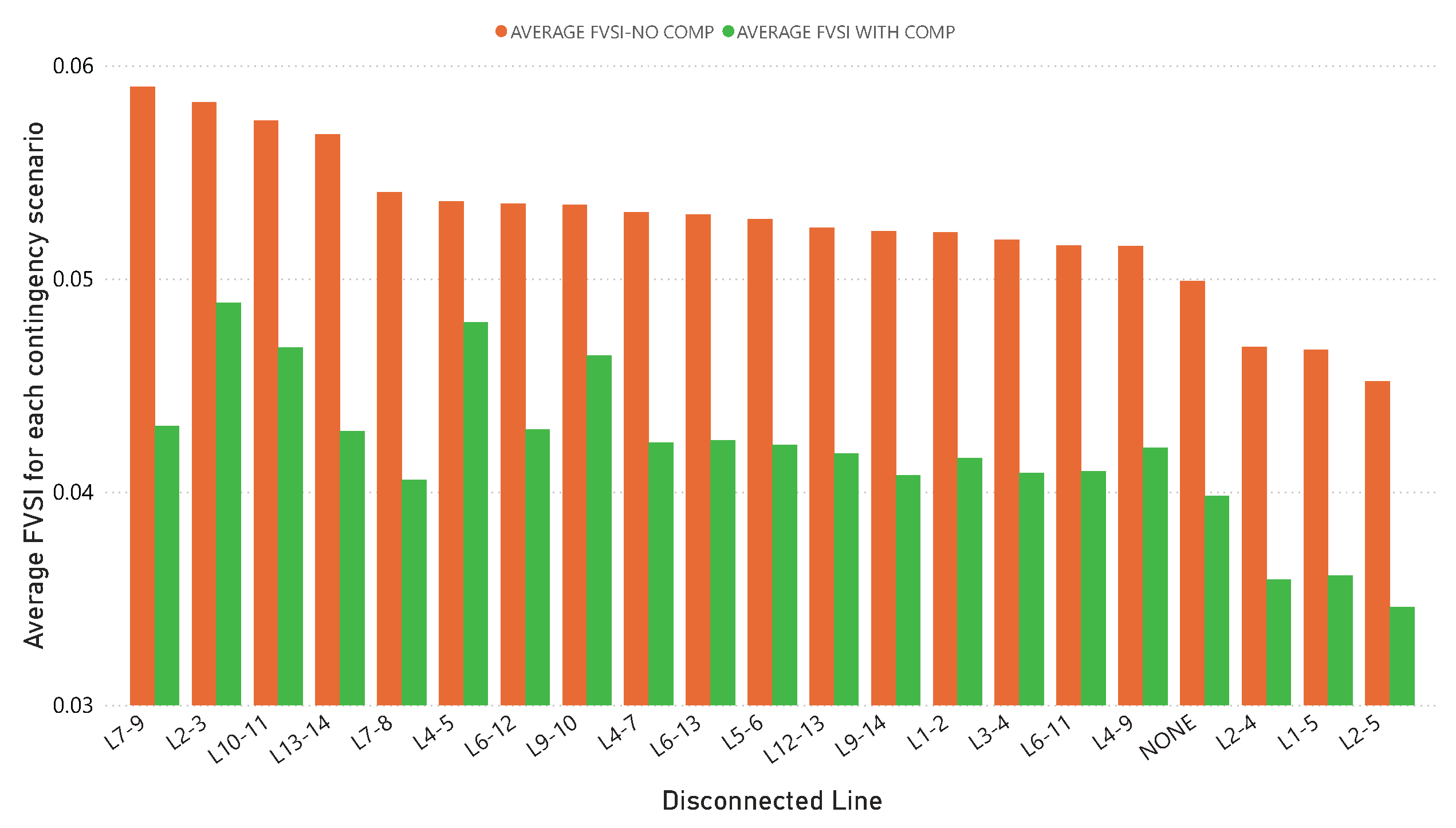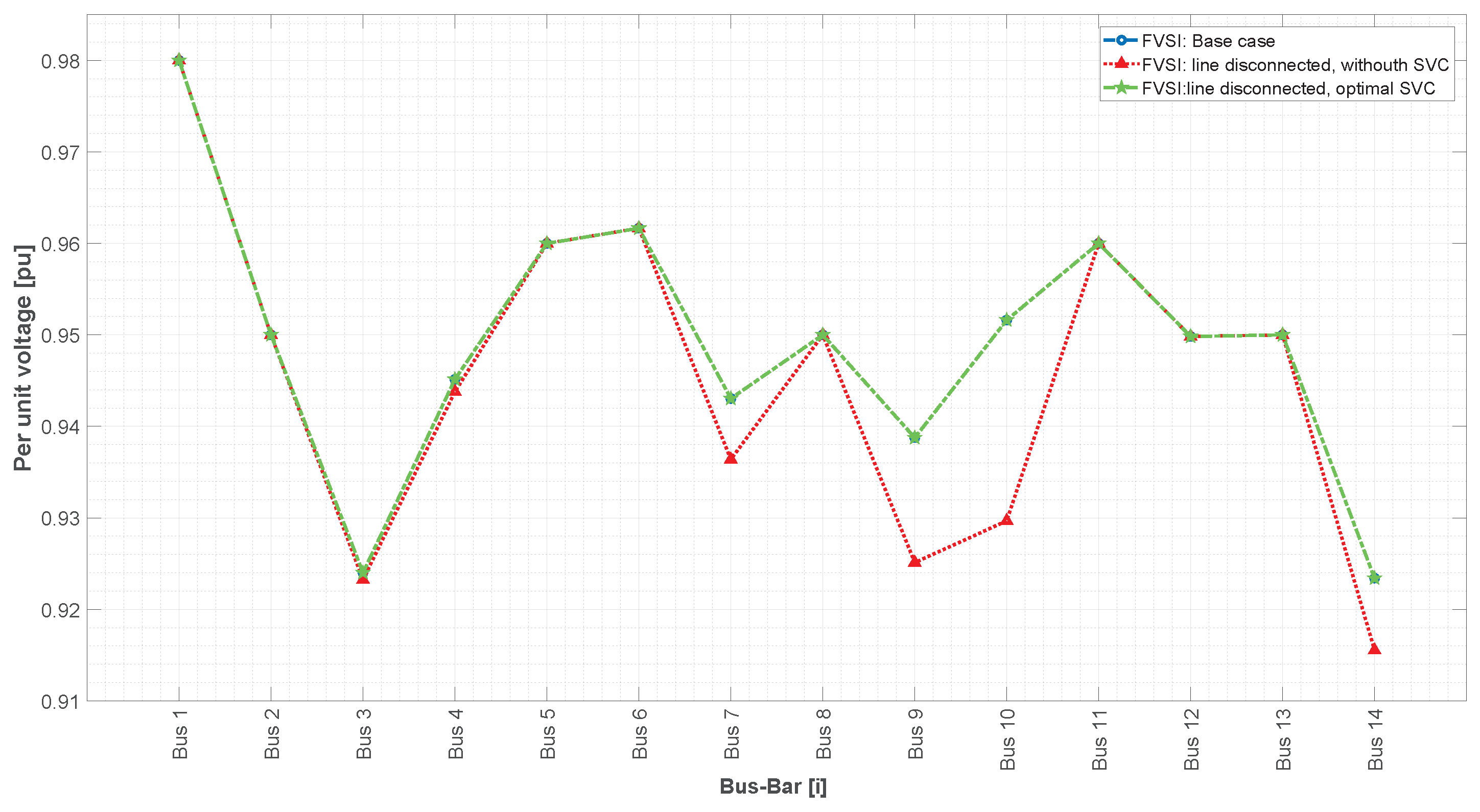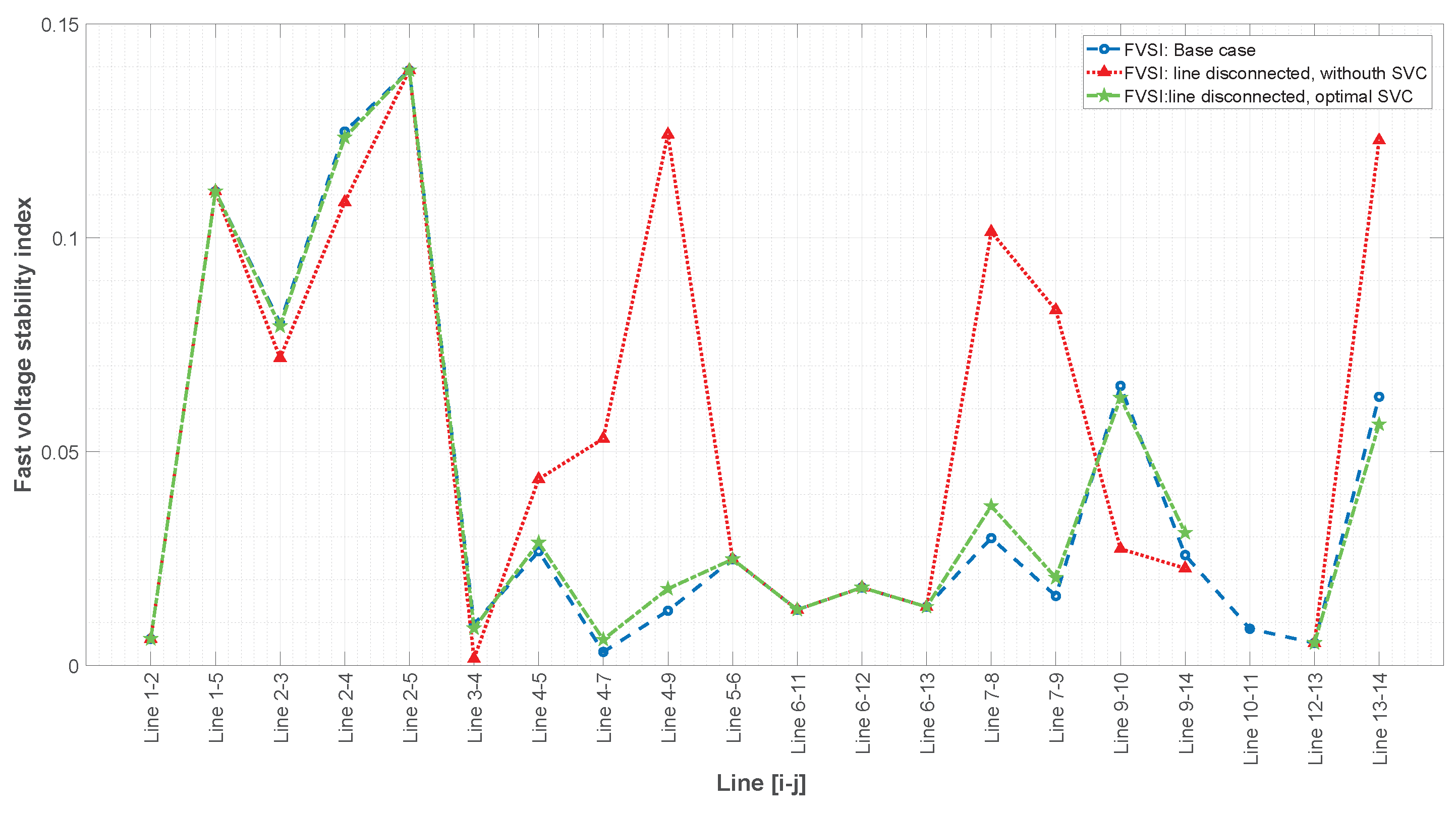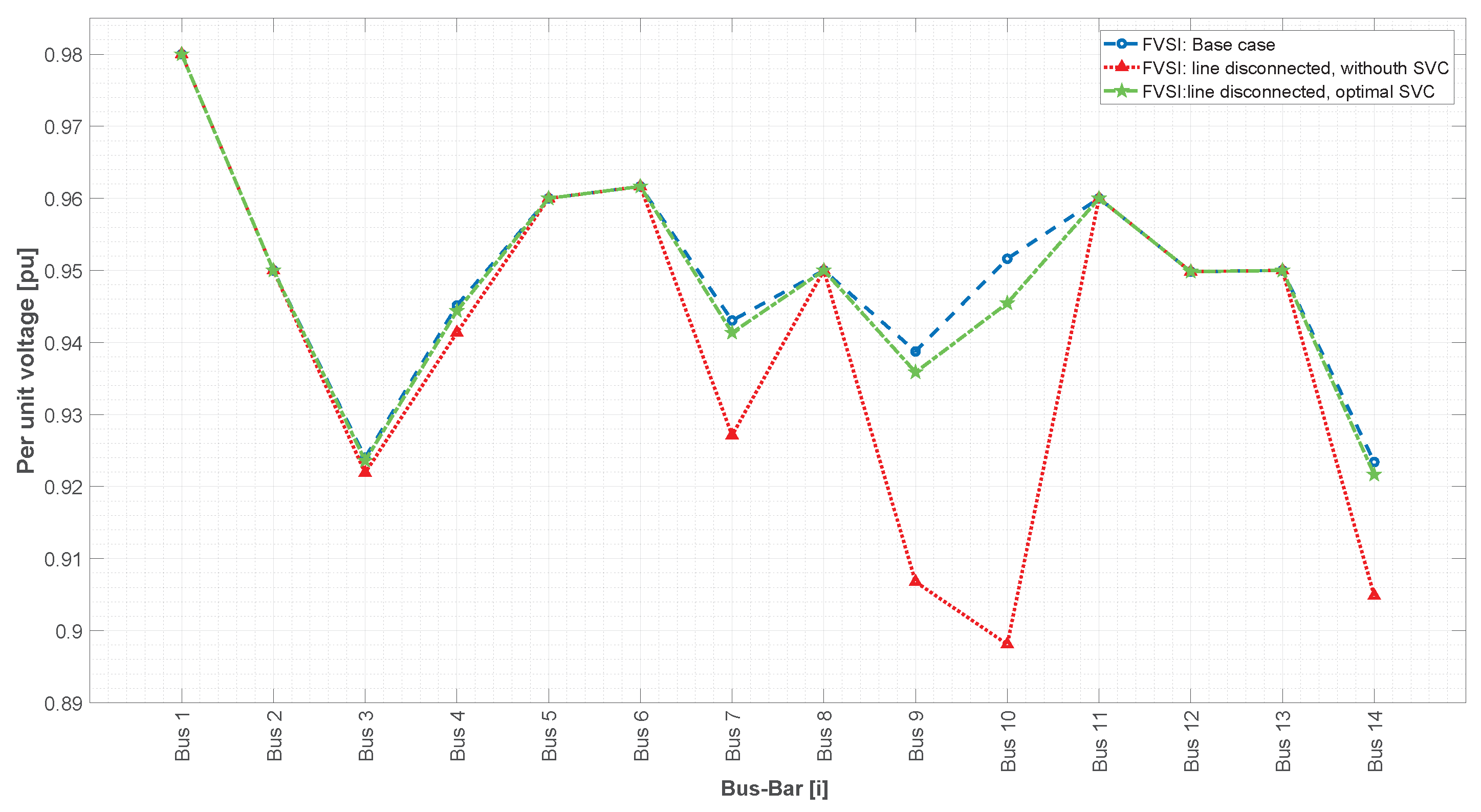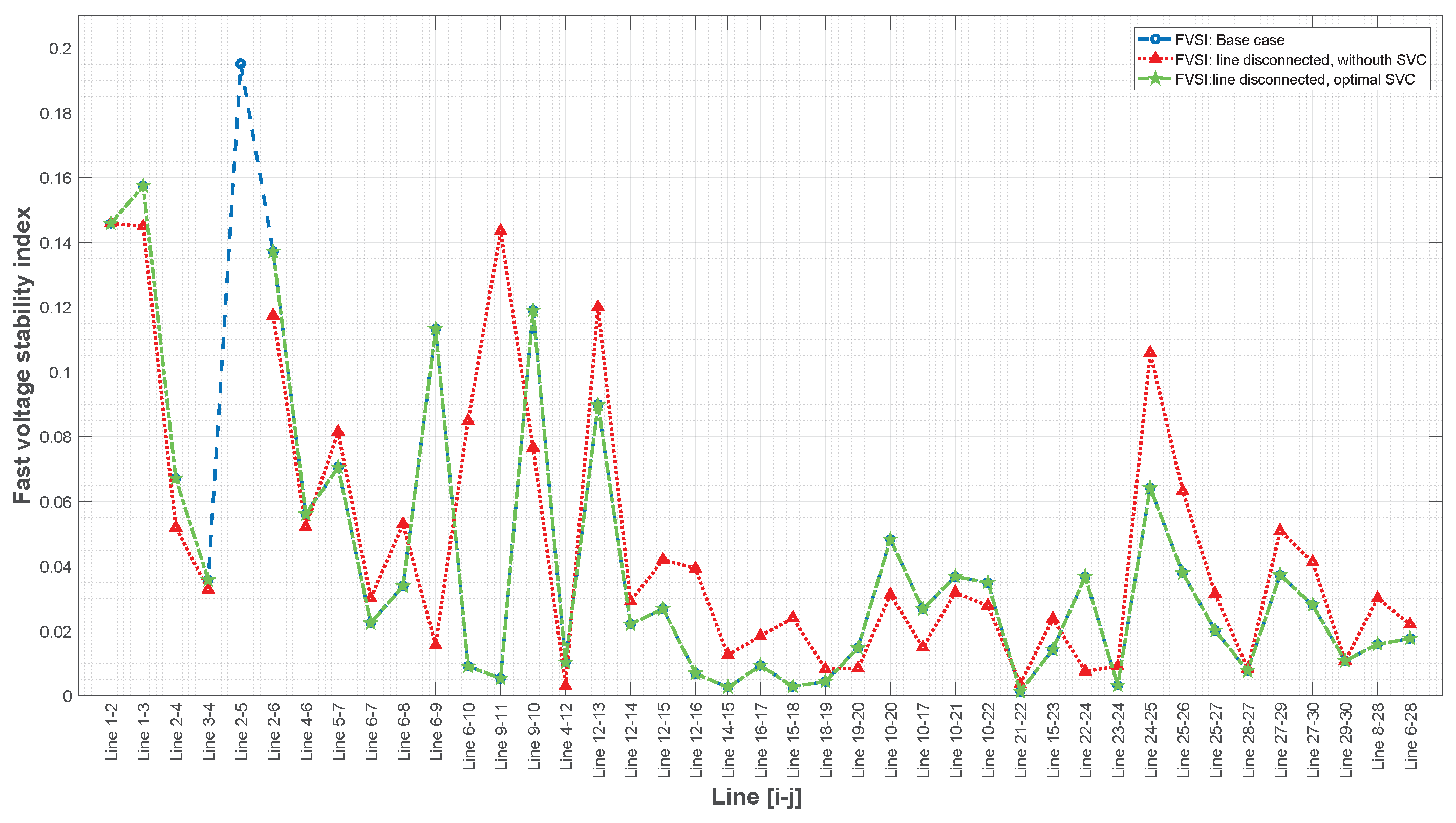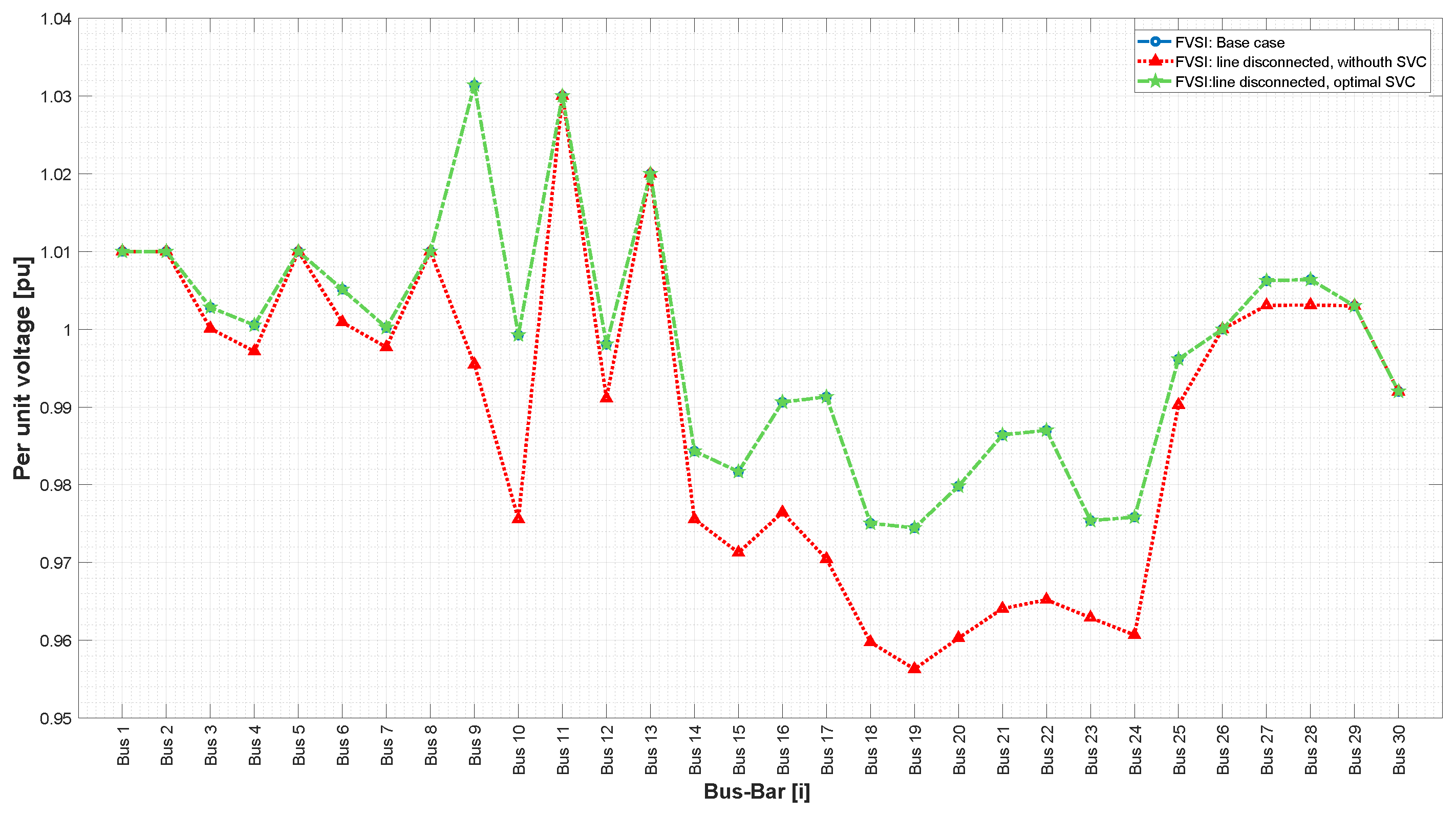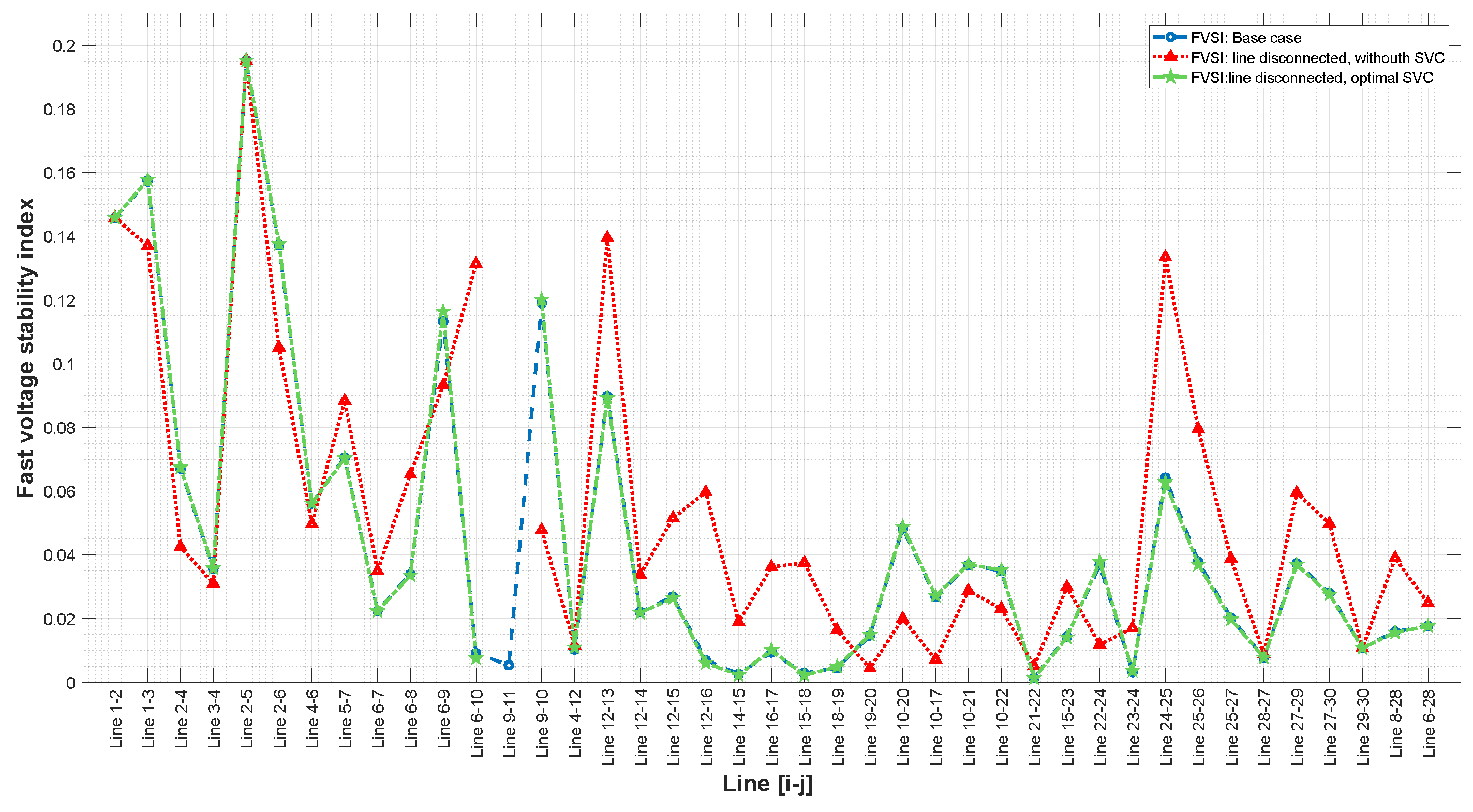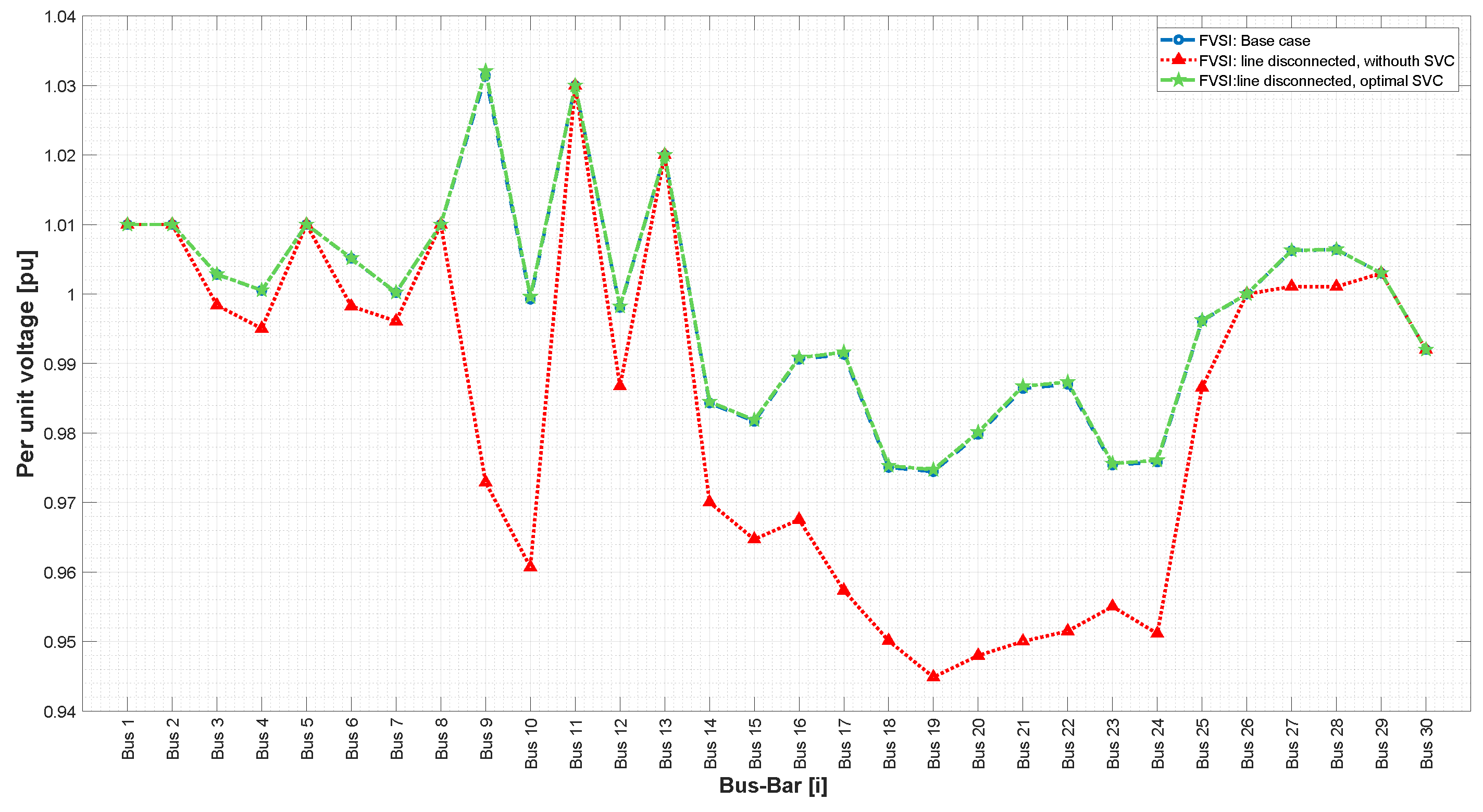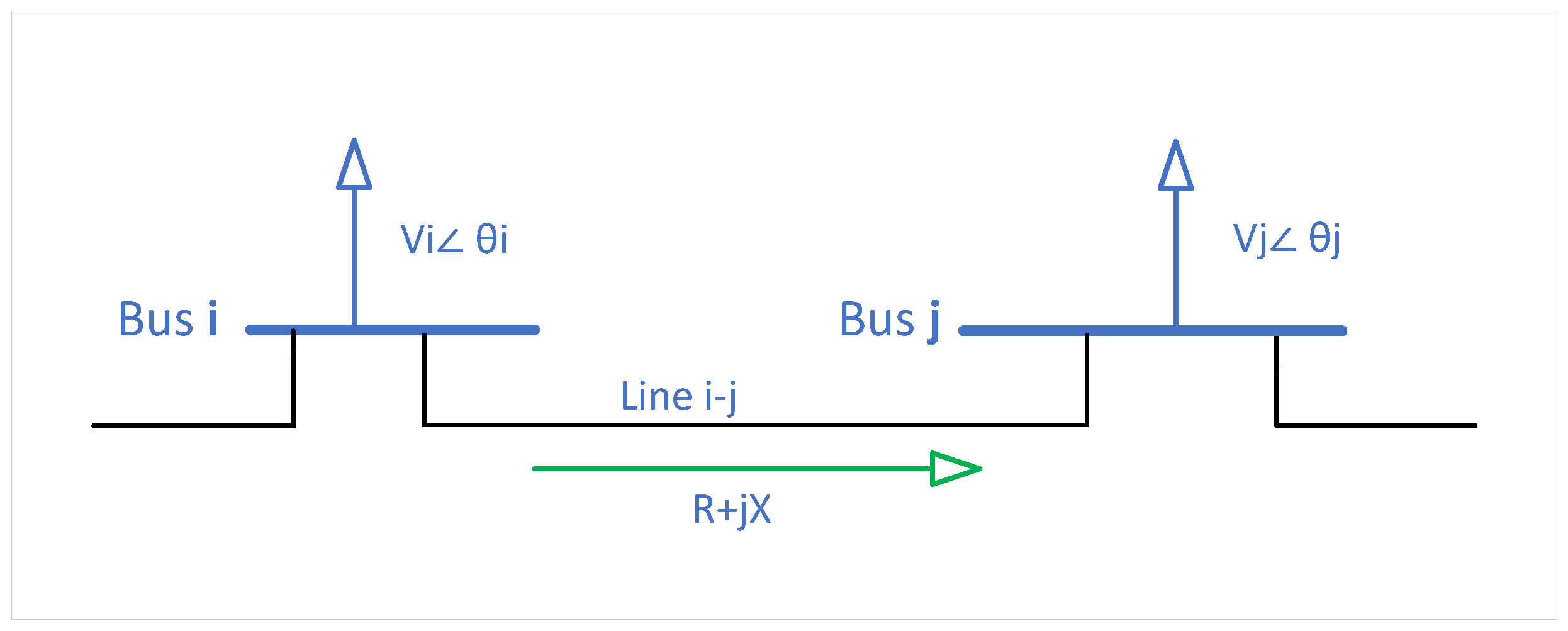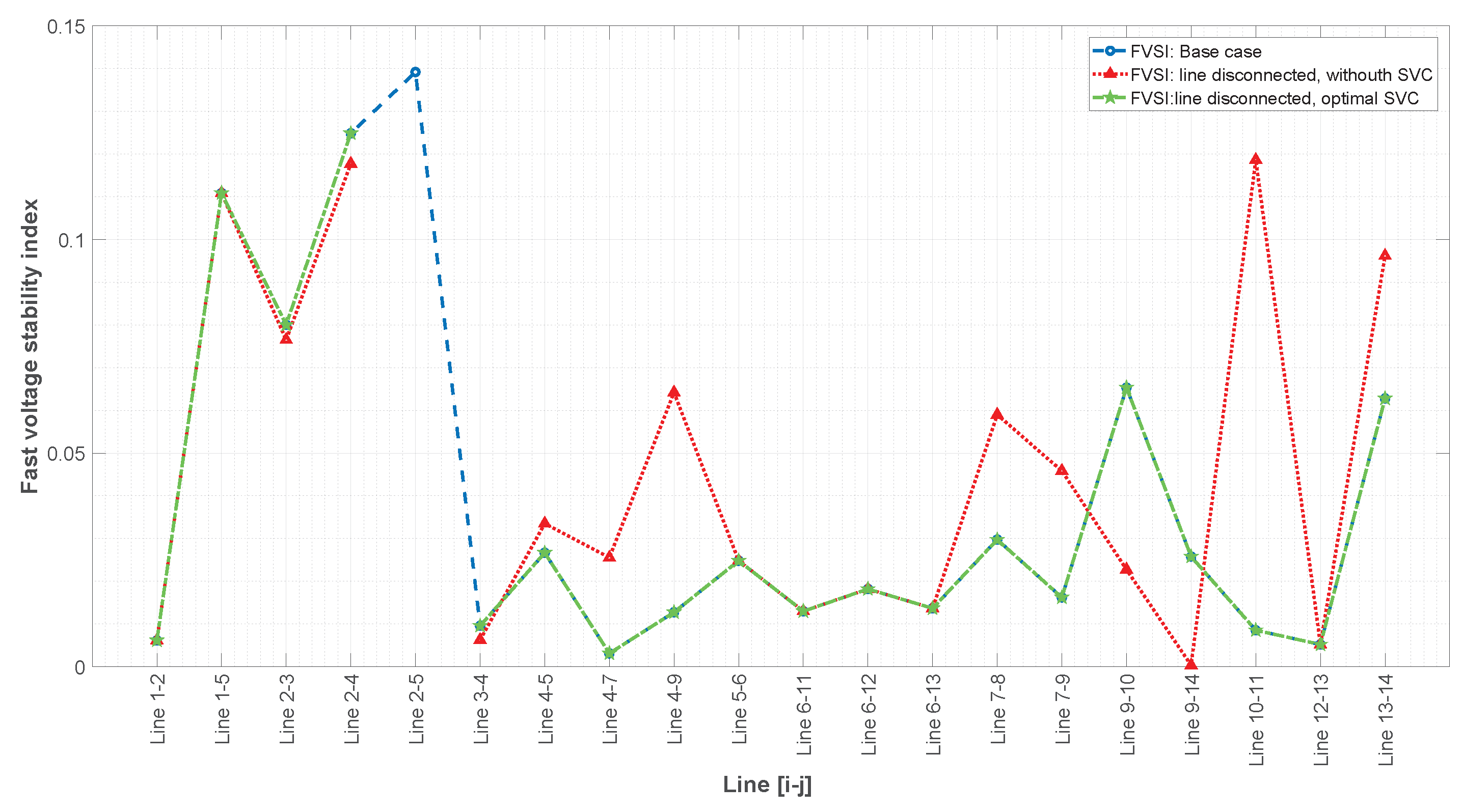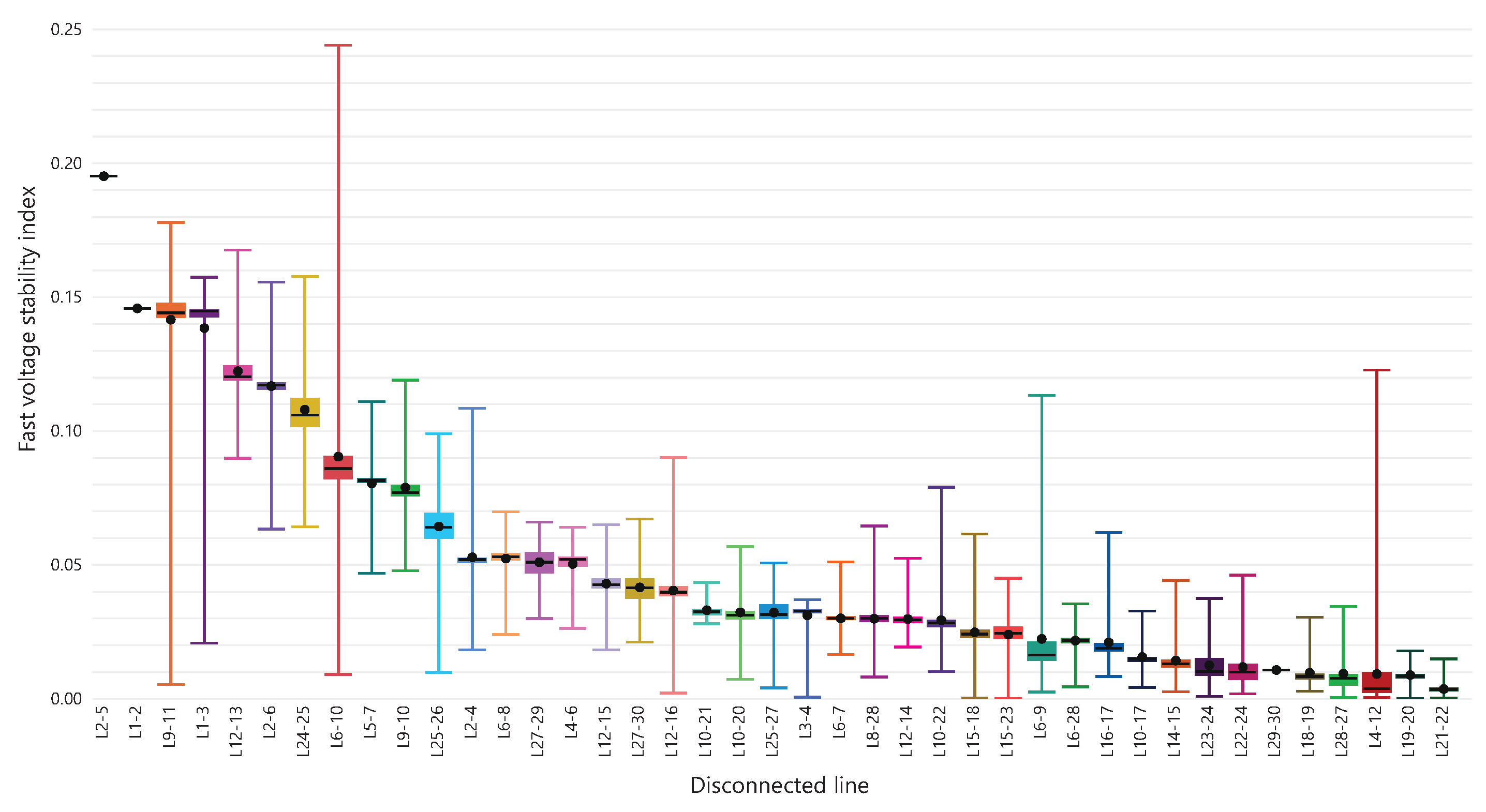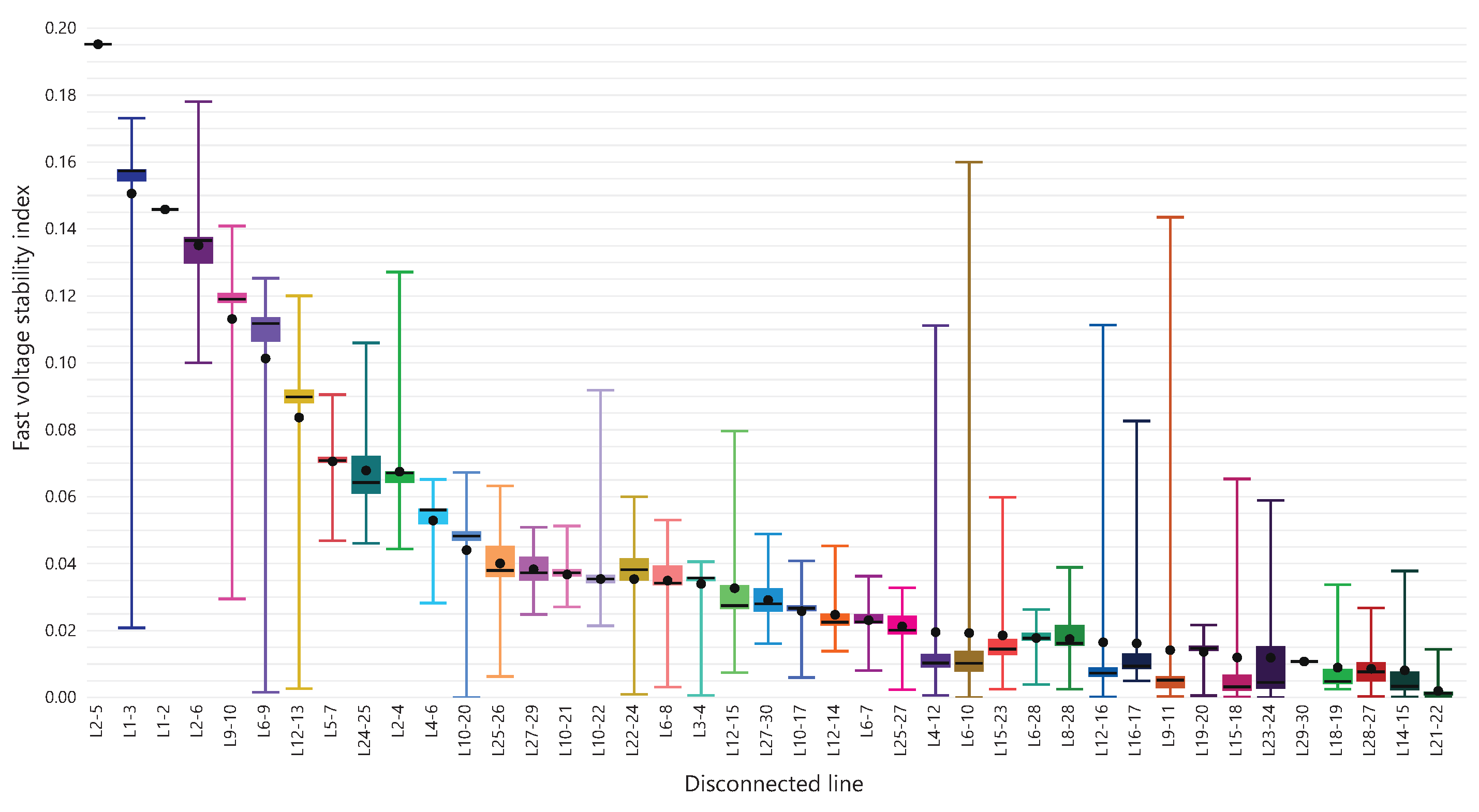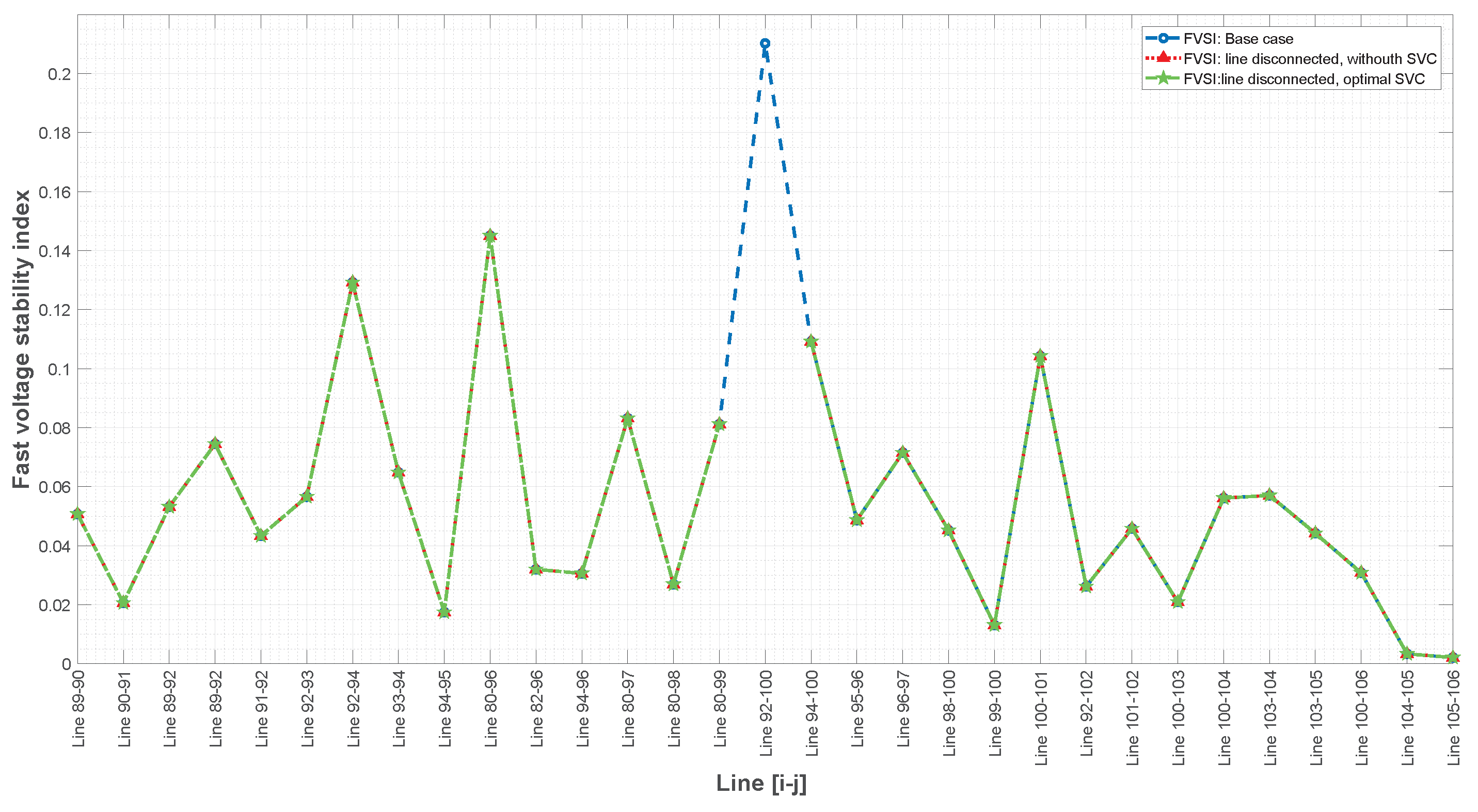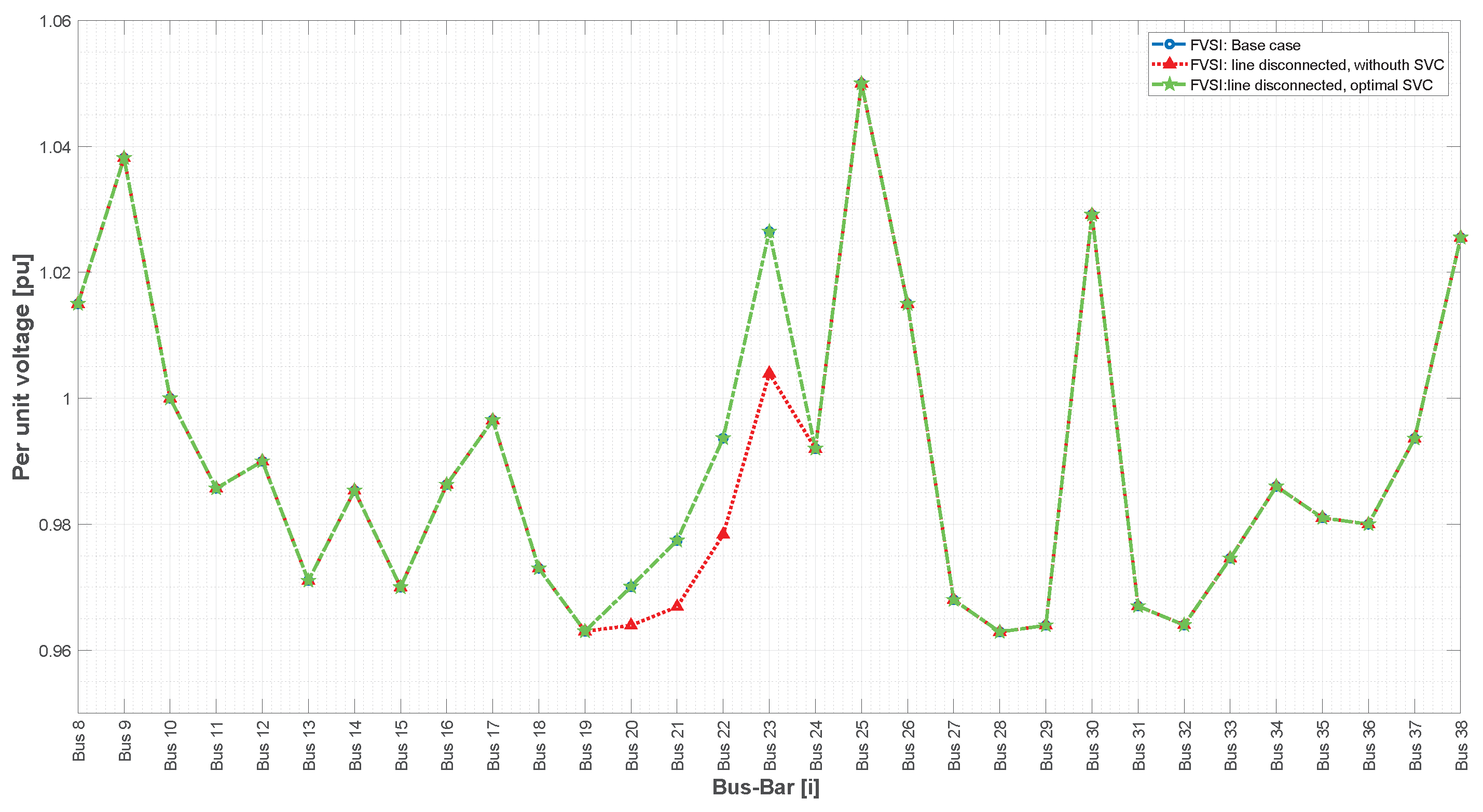In an electrical power system (EPS), certain aspects, such as planning, operation, management, and expansion, are essential for optimal EPS performance.
However, among the previously indicated EPS stages, voltage stability is an important issue that must be considered to ensure the safe and economical delivery of electrical energy to end users.
The traditional EPS faces challenges in its stability due to the occurrence of changes, especially in the transmission system, such as the continuous increase in electrical load and the growing incorporation of renewable energy sources. Excessive load on transmission lines is a crucial challenge for the power grid, as it can cause severe voltage drops and eventual system collapse in the case of an overload. Even minor disturbances can lead the grid to a critical state in such circumstances.
To date, research in the literature has focused on studying different stability indices in transmission lines and nodes to predict system collapse, establish appropriate strategies for load shedding due to voltage instabilities, regulate the load capacity of transmission lines, and reduce losses through reactive compensation systems.
This paper presents a methodology that improves power system stability by installing static VARS compensators (SVCs) according to the fast voltage stability index under contingency scenarios while also considering costs and the improvement of voltage profiles.
1.1. Literature Review
Voltage stability is one of the most studied parameters of EPSs. For instance, ref. [
3] describes voltage stability indices such as BVCPI, FVSI, LQP, BVCPI, and VCP-1. This review focuses on indices that identify the weakest bus in the electrical network and the application of PSO to minimize losses that cause voltage instability. The paper begins with a detailed understanding of blackouts and the phenomenon of voltage instability/stability, the classification of power systems, and corresponding formulations. The study provides an overview of voltage assessment techniques before applying PSO for discrete and multi-objective optimization and their advantages over other techniques.
The study in [
4] compared and evaluated six voltage stability indices, namely, Lmn, FVSI, LQP, Lp, NVSI, and NLSI_1, and tested their effectiveness through numerical studies in the IEEE 14-bus test system under various loading conditions. The research in [
4] aimed to identify the most suitable index to monitor the Nigerian power system. The advantages and disadvantages of each index are presented, and their performance was assessed in terms of their ability to predict voltage stability. The results provide insights into the strengths and weaknesses of each index and enable the selection of an appropriate index for monitoring the Nigerian power system.
The voltage stability of an electrical network is crucial to avoiding blackouts. It is achieved by identifying the system’s weak and less reliable elements by calculating their stability indices, whether in nodes or in lines [
5]. Evaluating system stability and identifying weak elements are fundamental to reliable operation and uninterrupted supply. For example, in the study in [
6], two approaches were evaluated to identify weak buses: the previously developed fast voltage stability index and a new reduced index based on fuzzy logic proposed by the authors; the classical approach based on the reduced method calculates contingencies more accurately and produces reliable results.
In [
7], it was demonstrated that node-based indices are superior to line-based indices in identifying weak nodes and areas in power systems that are susceptible to instabilities. The research in [
8] proposes a practical methodology based on Artificial Neural Networks to predict the fast voltage stability index. The proposed method was tested on IEEE 14- and IEEE 30-bus test systems. A comparative analysis of different RNA topologies was carried out based on the FVSI prediction capability, and the results were validated using the offline Newton–Raphson simulation method.
Voltage collapse is a critical consequence of voltage instability, which occurs when power systems operate at their maximum power transfer capacity limits. Therefore, it is essential to evaluate and, above all, have an accurate estimate of critical operating conditions to prevent voltage collapse through various indices that allow for the close monitoring of the system and the precise prediction of voltage collapse so that system technicians and operators can take timely corrective measures and ensure a more reliable and secure electrical network. This has led some authors to focus on calculating and, in some cases, proposing new stability indicators and comparing them with traditional ones for stability evaluation, as in [
9,
10], where two new modern indices for voltage stability evaluation (MVSI and NCPI) are presented and compared with indices such as Lmn, FVSI, LQP, NLSI, and VSLI. Their results show that these indices effectively identify critical lines, weak buses, and areas in medium to large networks under various operating conditions, including contingencies, with Mokred validating their proposal in the IEEE 30-bus system. Additionally, in [
11], the focus is on the usefulness of two voltage stability indices (FVSI and LQP) to identify weak buses so that appropriate measures can be taken in advance to prevent voltage collapse.
In the two studies described in [
12,
13], a new line stability index (NLSI_1) is proposed to predict voltage collapse in electrical power systems. It is based on a switching logic derived from the voltage angle difference between the loads of the evaluated nodes. The results are compared with the line stability index (Lmn) and the fast voltage stability index (FVSI) in the IEEE 14-bus test system and a real case of the Nigerian network.
The research in [
14] discusses the evaluation of the maximum loadability of the transmission network, considering single and double contingencies. To achieve this, the installation of SVC, TCSC, and UPFC devices is considered, increasing the power transfer capability. The methodology for identifying the appropriate point to compensate is based on evaluating stability indices such as the CSI and FVSI. The proposed problem was simulated using MATLAB 7.0 and tested with the WSCC 9-bus system, optimizing with the MDE algorithm. The results show that the method reduces installation costs and improves the overloading of transmission lines.
Reactive compensation is one of the best ways to improve the steady-state operation of a power system. For example, in [
15], the system’s operability and reliability were enhanced by optimizing the placement and sizing of FACTS-based compensation systems to reduce voltage deviation in 14-, 30-, and 118-bus test systems while accounting for uncertainty in demand growth using deep neural networks. However, these works did not consider the power system’s voltage stability [
16].
The researchers in [
17] propose the use of voltage stability indices to monitor and control the voltage of an electric power system and propose a method for the optimal placement of a series static synchronous compensator (SSSC) to improve voltage stability. The technique involves classifying contingencies according to their voltage stability margins, analyzing three voltage stability indices under the five main contingencies, and placing the SSSC on the five main critical lines to observe the optimal placement. The proposed method was applied to an IEEE 14-bus system, and the results show that the SSSC improves the voltage stability of the system.
The authors of [
18] presents a new methodology for the optimal installation of Distribution Static Compensators (DSTATCOMs) in Electric Distribution Systems (EDSs) using an Arithmetic Optimization Algorithm (AOA). The objective of the methodology is to minimize the active energy loss (APL) and various voltage stability indices, including the voltage stability index (VSI), fast voltage stability index (FVSI), line stability factor (LPQ), and power/voltage stability index (PVSI). The methodology was tested on 33- and 69-bus systems, and the results show that the optimal installation of the DSTATCOM can significantly reduce energy losses and improve voltage profiles.
In [
19], the researchers present a method for optimizing shunt compensation in electric power systems to improve voltage stability. FVSIs are used to determine vulnerable load lines and buses, while PSO is used to find a shunt compensator’s optimal location and size. The method was applied to the IEEE 14-bus test system for different contingencies, and the results show an improvement in voltage stability. The methodology used in this study consists of two main steps: First, FVSIs are used to identify vulnerable load buses and lines in the electric power system. Then, the PSO algorithm is used to find the optimal location and size of shunt compensators. A STATCOM was implemented as a shunt compensator. The study results show that implementing the proposed method significantly improves the electrical power system’s voltage stability and load capacity. Furthermore, the study demonstrates that using FVSIs and the PSO algorithm optimizes shunt compensation in electric power systems. The main contribution of this study is the proposal of an effective method for optimizing shunt compensation in electric power systems using FVSIs and the PSO algorithm.
By installing SVC and TCSC FACTS devices on the weakest bus and line, the study in [
20] shows how to increase the energy transfer, voltage profile, and load capacity. It also examines using FACTS devices to reduce overload in electric power transmission networks. They used the standard IEEE 30-bus test system to validate their methods. The findings indicate that using FACTS devices improves the voltage profile, energy transfer, and load capacity and reduces energy loss. The employment of FACTS devices has also been shown to considerably increase the performance of the electric power system, which has significant implications for the electric power sector.
The study shown in [
21] discusses the issue of the voltage stability of electric power networks and suggests using two indices, the line stability index (Lmn) and fast voltage stability index (FVSI), for an IEEE 30-bus test system to identify the weakest bus. The findings demonstrate that shunt compensation is the most effective FACTS compensator for increasing voltage stability. Tables and figures are used to support the results. In conclusion, the study proposes a methodology for enhancing the voltage stability of electric power networks and presents a practical approach to identifying and addressing the system’s weakest bus.
In [
22], an integrated framework for evaluating and improving the voltage stability of electric power systems through optimal load shedding is proposed. The objective is to enhance the voltage stability of electric power systems by identifying weak buses and lines and using load shedding as a control method to stabilize the system. The methodology employs various voltage stability indices to identify weak buses and lines. Optimal load shedding uses metaheuristic algorithms such as particle swarm and gray wolf optimization. The technique was successfully tested on the IEEE 30-bus test system. The results show that the proposed technique based on the FVSI is effective in improving the voltage profile under high-demand conditions. The study also highlights the advantages of using GWO instead of PSO for computational efficiency and voltage profile improvement.
In [
23], an algorithm is presented to prevent the voltage instability of electrical networks by implementing an under-voltage load-shedding (UVLS) system using the indices FVSI and LSI in the IEEE 39-bus system with distributed generation. The results show that the system performance after disconnection did not differ significantly from the base case, and the voltage instability of electrical networks can be prevented by using the FVSI and LSI to determine the most unstable loads, which can be shed before the voltage further decreases.
In addition, distributed generation and renewable power plants are an essential part of today’s power grids. In [
24], the authors provide an overview of the voltage stability index (VSI) as an important indicator of power system stability due to the increasing integration of renewable energy sources (RESs) into the power system, rapid load changes, and increasing power demand.
Deep learning has also been used to assess system stability. In [
25], the authors suggest a deep-learning intelligent system for power system short-term voltage stability assessment (STVSA) that includes data augmentation. The method uses conditional least-squares generative adversarial network (LSGAN)-based data augmentation to increase the dataset after obtaining labeled samples from a limited dataset using semi-supervised cluster learning.
In [
26], the authors discuss the potential issue of overvoltage in power grids due to the increased penetration of Photovoltaic (PV) units and proposes a long-term strategy to resolve the issue. The strategy involves employing demand response (DR) programs and load-shifting techniques to reduce voltage levels during peak hours. This reduces the need for active power curtailment and reactive power provision methods, which can limit the maximum injectable active solar power to the grid and decrease the inverters’ lifetime. The proposed approach also reduces under-voltage levels during peak times and introduces new insight into DR potential.
